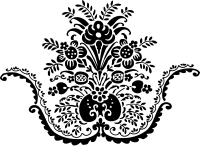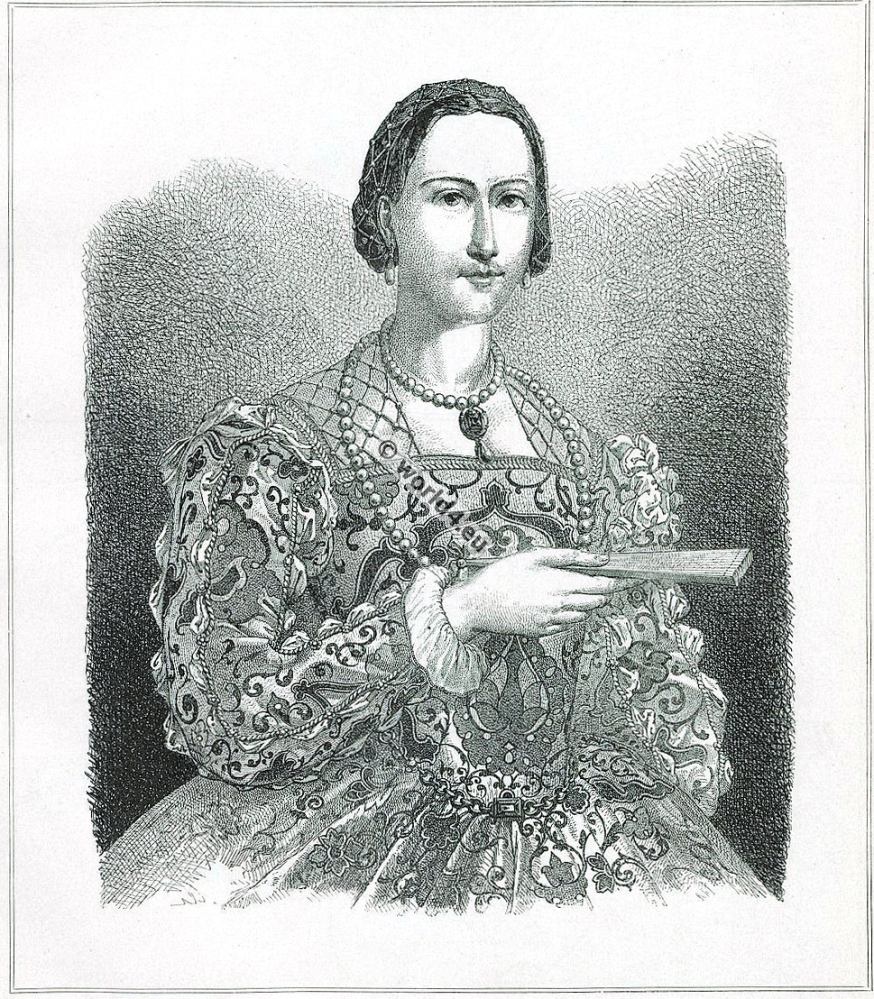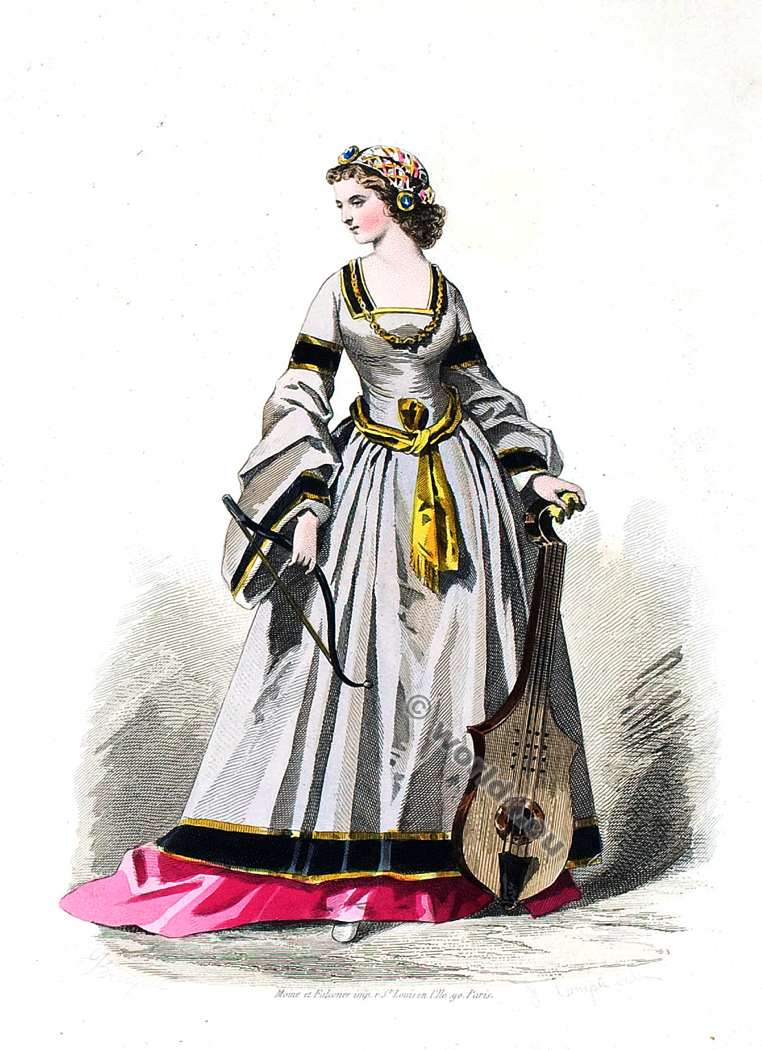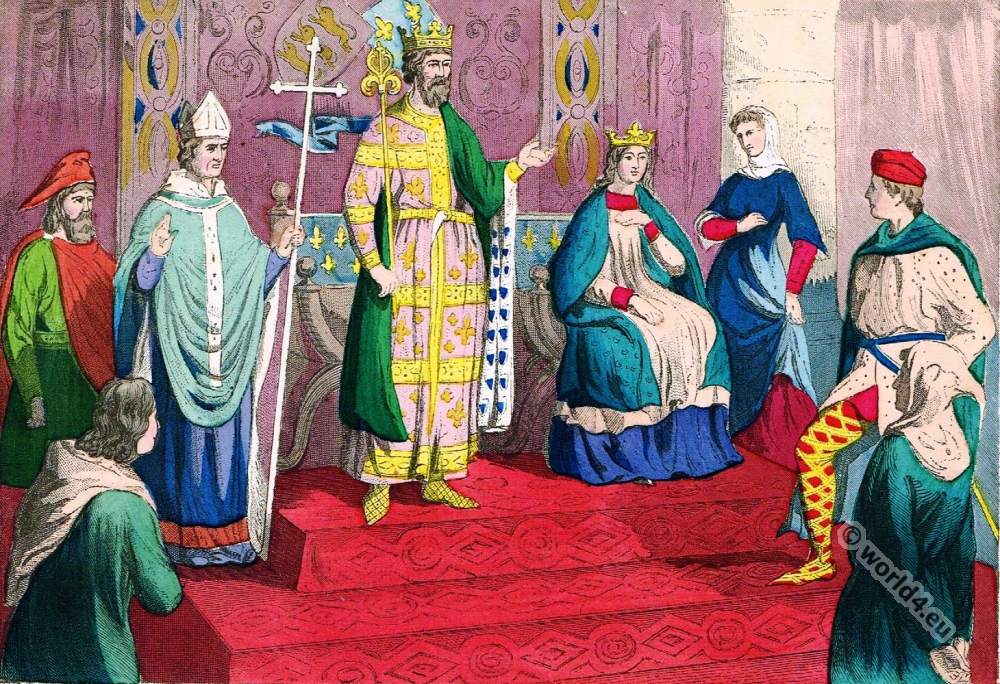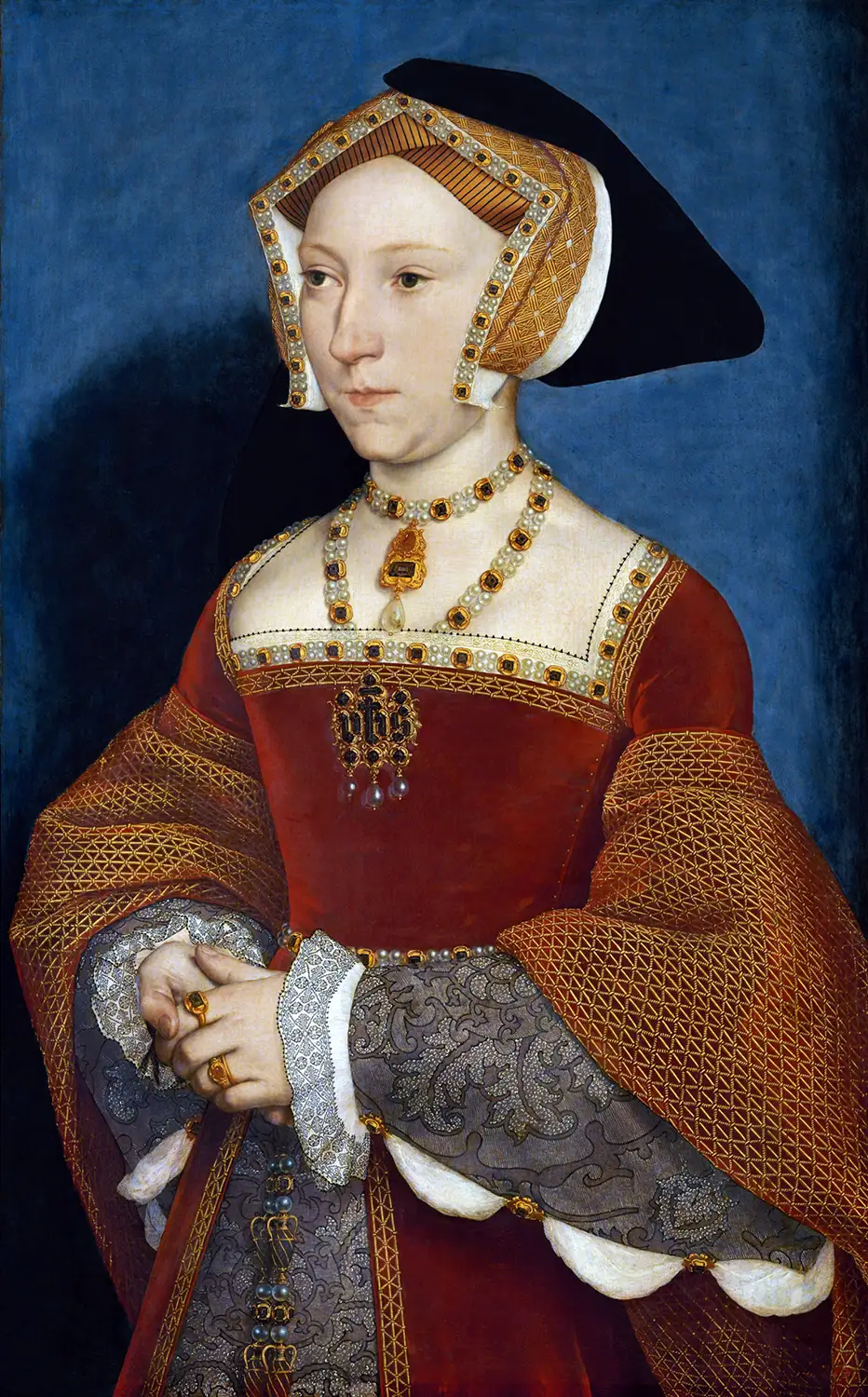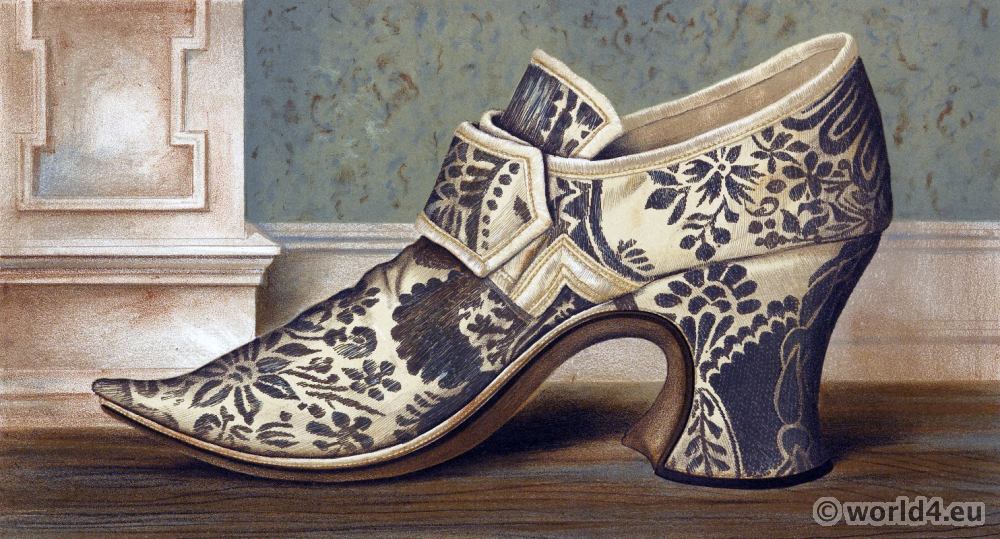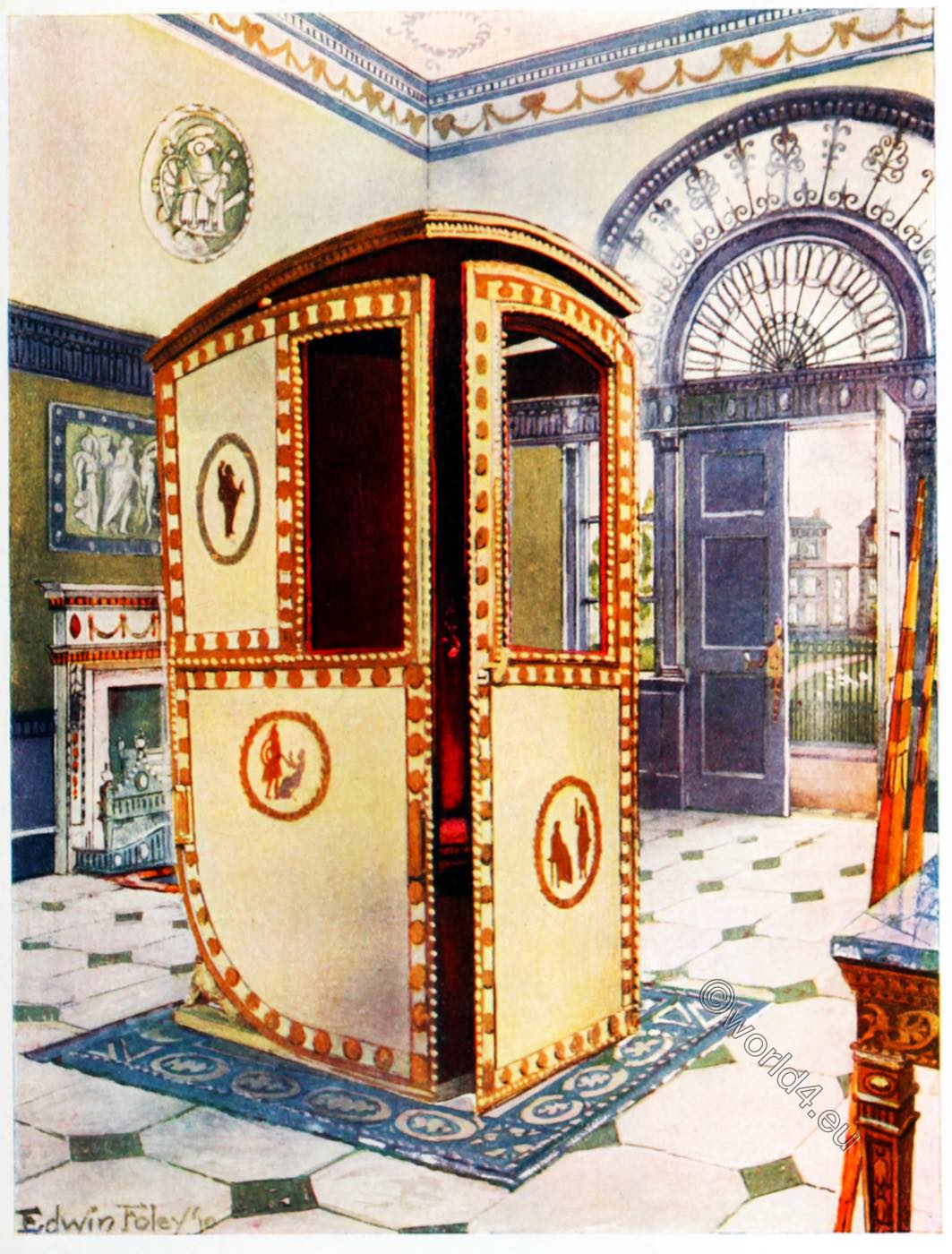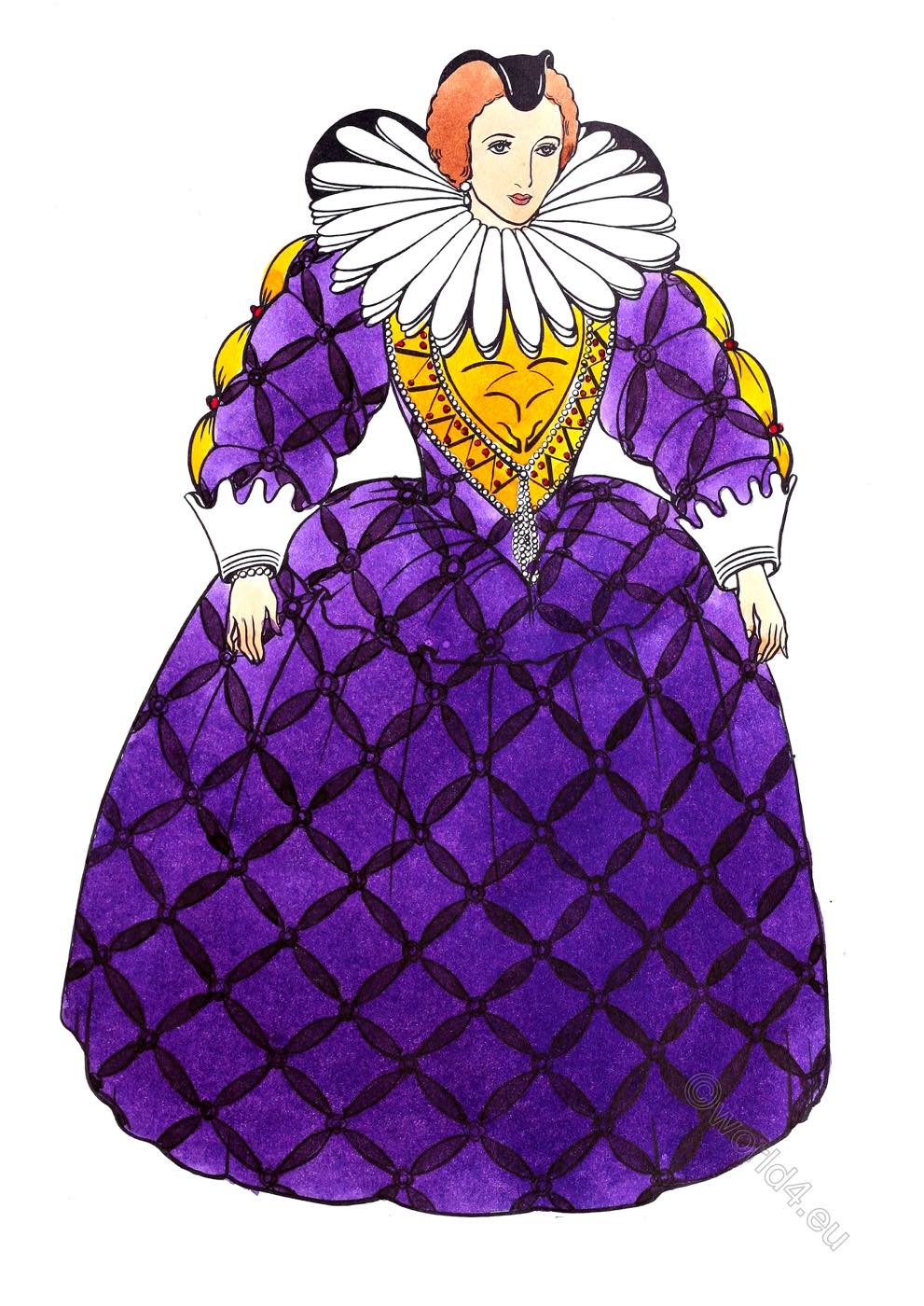
ELIZABETHAN ENSEMBLE- 1550 to 1620.
PLATE NO. 41.
Pictured here is a typical feminine Elizabethan ensemble of the middle of the era, that is, sometime during the last quarter of the 16th century. The woman shown here might very well be the Queen herself except for a scarcity of jewelry and the rather high neckline of the bodice.
Her hair has been simply arranged in a low pompadour. It ha s been left free from ornament except for the Mary Stuart hat. This is a small, head covering, probably made of buckram covered with velvet, and was usually worn by matrons or widows. The black wing-like extensions showing above each shoulder are in all probability attached to the cap. The earring completes the headdress. Earrings were very common and appeared frequently in feminine ensembles.
The collar shown here could be called a form of ruff, though by studying the picture one can see its construction is somewhat different. It seems to b e made of scalloped linen, cut and sewn to resemble large petals. There are three tiers of these sewn to a neckband. The entire affair is worn exactly like a ruff, that is, high on the back of the neck, sloping down in front under the chin. This type of “band,” as the Elizabethans called all neckwear, was, needless to say, not common.
The gown is more typical than her collar. The bodice is long-waisted and fits in the characteristic pointed, tight manner. The gold-and jewel-encrusted front is probably an integral part of the bodice, though it may, and could, be a superimposed sort of bib or vest. Notice the ever present pearls. The sleeves are full and padded, slightly reminiscent of the previous period. They are slashed down the outside seam and fastened at intervals with jeweled brooches. The cuffs are of starched linen, scalloped to match the collar.
Under her long voluminous skirt and petticoats, she wears a French farthingale. This was a tremendous hip-bolster that fastened around the waist and held the skirt out in a round, hoop-like distention.
Her dress was probably made of a rich, purple velvet, with slashes and bodice-front of tawny satin. White and black were likewise popular in Elizabethan ensembles and always appeared somewhere in the color scheme.
Source: Museum Extension Project. History of Costume.
